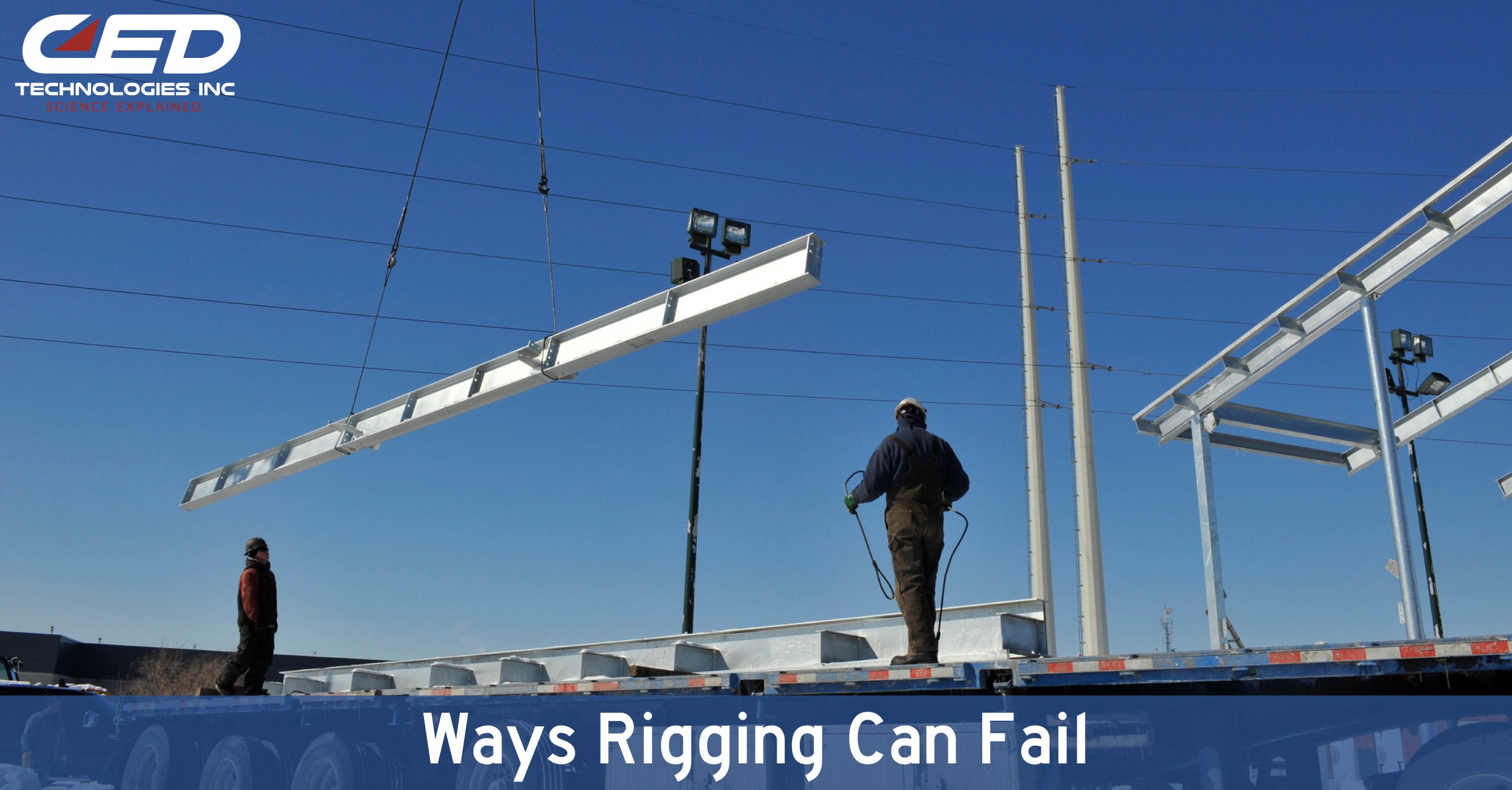One of the most important jobs of crane operation on construction sites is rigging of the load. Rigging (material handling) is the act of using equipment such as cranes, jacks, slings, chains, and pulleys to prepare, secure, and move large or heavy objects from one destination to another. Rigging can potentially be a hazardous element of crane operation. Since rigging involves lifting and relocating large loads like machines and materials, the potential for error is always present.
The stability of a load being rigged requires a consideration of center of mass, total weight to be lifted, dimensions of the load, and type of rigging chosen for the lift. A load is considered stable when the center of mass of the load is directly below the main hook and below the lowest point of attachment of the slings. Since center of mass may not be obvious, several attempts at rigging may be required to determine the center of mass for the material or object to be safely lifted. For this reason, employers must use qualified riggers who meet OSHA standards.
Rigging involves multiple hazards, including falls, electrical hazards, and struck-by or crushing incidents. A worst-case scenario is a rigging failure, in which a sling or wire rope breaks, dropping the load. This can potentially result in property damage, bodily injury, or death.
Below are the top reasons rigging systems fail:
- Improper Rig –Qualified riggers need to be aware of all requirements for heavy load systems and techniques. They need to be able to calculate the load limit of the rigging equipment and choose the hardware for every facet of the job based on the equipment rating. They need to take into consideration factors such as the location of the load to be lifted, the drop location of the load, and stability of the load once it is lifted.
- Faulty Equipment – Commonly used slings, such as synthetic web slings and wire rope, are susceptible to failure based on age, environment, and prior use. Slings must be inspected prior to each use to determine the material condition of the sling and the sling capacity. Sling should be discarded and removed from service if the sling has been materially compromised.
- Overload – All rigging equipment has a load limit. Rigging professionals must properly calculate the load weight for rigging and hoisting, but it can be difficult to estimate weight of heavy machinery. Riggers may also overlook the weight of the rigging equipment below the hook in their overall calculations, which could result in an overload.
Riggers and crane operators should be vigilant in following the most recent standards published by The American National Standards Institute (ANSI), the American Society of Mechanical Engineers (ASME), and OSHA. CED’s engineers have extensive experience in analyzing and determining causation in crane and rigging accidents using these safety standards. We have riggers on our team who have completed extensive training and certifications – Gregory J. Paulsen, P.E., CPE, CFEI, CFPS and Samuel J. Taylor, P.E. If you have a rigging or heavy machinery accident, submit a case request online to reach an experienced engineer.
Click Here To See Our Full List of Experts Click Here To Submit an Inquiry about a possible Claim or Case.






